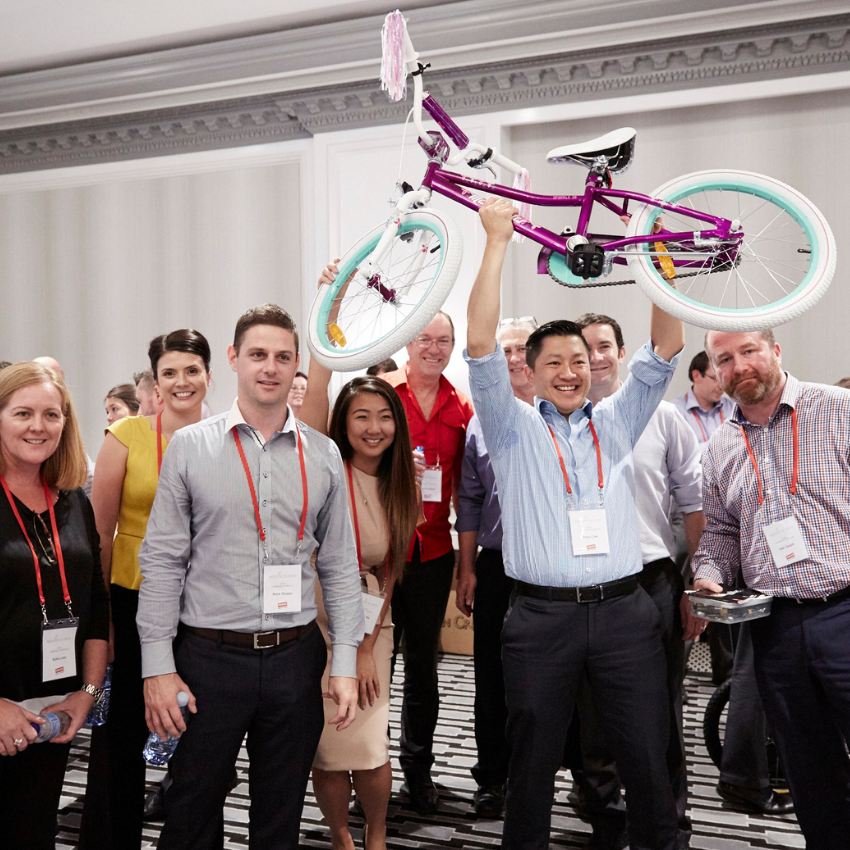In the ever-evolving landscape of the modern workplace, new trends have emerged and reshaped how we perceive and engage in our work. One such significant shift that has taken centre stage over the last four years is the arrival of hybrid work. This model is not just a fleeting trend but a substantial shift in our work culture, spurred by the advancements in technology and the changing needs of the workforce.
To truly appreciate the magnitude of this shift, let’s take a moment to travel back in time to the workforce of 50 years ago. In the 1970s, the concept of hybrid work would have been utterly foreign. The majority of jobs were based on manual and physical skills, and the notion of working remotely was practically non-existent. Work was largely defined by rigid schedules, fixed locations, and a clear separation of professional and personal lives.
Fast forward to today, and the hybrid work model, a blend of remote and on-site work, is now an integral part of our work culture.
As we navigate through 2024, hybrid work is no longer a novelty but a norm for many industries. This article delves into the journey of hybrid work over the past four years, its current state, and how it is shaping our future work practices. We will explore its pros and cons, the role of leadership, and the differing perspectives of employees and leaders regarding this model.
The Shift Towards Hybrid Work
Before 2020, remote work was a novel concept, often regarded as a perk for a select few roles or industries. However, the onset of the COVID-19 pandemic drastically altered this perception. With global lockdowns and social distancing norms, businesses worldwide had to pivot swiftly towards remote work models. Homes morphed into offices, and digital tools became vital lifelines connecting teams across cities, countries, and continents.
This sudden shift was not without its challenges, but it also revealed the potential of a more flexible work arrangement. Companies found that tasks traditionally considered possible only within office confines could be effectively accomplished remotely. Employees, on the other hand, experienced the flexibility and autonomy of working from home.
Recent surveys indicate that the desire for flexible work arrangements continues to dominate the post-pandemic world with 25% of workers willing to take a 15% annual salary pay cut for flexible working hours. However, a complete shift to remote work is not universally desired or feasible. Many employees miss the collaboration, spontaneous interactions, and camaraderie of a physical workspace, leading to the rise of the hybrid work model.
Return to Work Policies and the Differing Views in 2024
As we venture into 2024, the debate around return-to-office (RTO) policies has intensified. There seems to be a growing divergence between employers advocating for in-office attendance and employees seeking the flexibility offered by remote work.
According to a Resume Builder report, an overwhelming 90% of companies plan to implement RTO policies by the end of 2024. The message from most companies, according to recent surveys, is that even if five days a week won’t be a requirement, office attendance will be more closely tracked in 2024. The definition of RTO is changing, with mandates increasingly not applying to every employee, every day.
At the same time, the “return to office or else” approach adopted by some CEOs has had limited success. In a recent survey a shift in perspective has emerged revealing that only 4% of CEOs worldwide say they will prioritise bringing workers back to the office full time with recruitment and retention emerging as higher priorities.
%
of companies plan to implement RTO policies by the end of 2024
%
CEOs worldwide say they will prioritise bringing workers back to the office full
This suggests that while there’s a push towards RTO, the emphasis on physical presence in the office isn’t universal among company leaders.
Meanwhile, employees’ perspectives on RTO are varied. Many employees appreciate the social interaction and collaboration opportunities that come with working in an office. However, others value the flexibility, autonomy, and work-life balance that comes from remote work.
A study by McKinsey found companies with more collaborative work environments were 5 times more likely to be high performing. When collaboration diminishes, innovation disappears, and so does overall performance.
As we move forward, these differing perspectives will continue to shape the future of work. Some predict that RTO mandates may start to disappear if they don’t boost productivity, while others anticipate more standoffs over such mandates.
It’s clear that mastering hybrid work will require a balanced approach, taking into consideration the needs and preferences of both employers and employees. The challenge lies in creating a work model that combines the best of both worlds, offering the flexibility of remote work without compromising the benefits of an office environment.
Pros of Hybrid Work on Team Culture
Enhanced Flexibility
Hybrid work models provide employees with the flexibility to work when and where they are most productive. This can lead to increased job satisfaction, motivation, and engagement, all of which contribute to a positive team culture.
Increased Diversity and Inclusion
Hybrid work allows companies to hire from a broader talent pool, including those who may not be able to relocate for work. This can foster a more diverse and inclusive team culture.
Improved Work-Life Balance
The hybrid model can help employees achieve a better work-life balance by eliminating commuting time and providing more opportunities for personal and family activities. This can lead to greater employee happiness and a more positive team culture.
Cons of Hybrid Work on Team Culture
Communication Challenges
Remote work can make communication more challenging, particularly for complex discussions that might be easier face-to-face. Miscommunications can lead to conflicts or misunderstandings, potentially damaging team cohesion.
Potential for Isolation
Employees who work remotely most or all of the time may feel isolated or left out. This can harm team culture by creating an “us vs. them” dynamic between remote and in-office employees.
Difficulties in Building Relationships
In a hybrid work environment, it can be more difficult to build strong relationships due to less face-to-face interaction. This lack of personal connection can hinder the development of a strong, positive team culture.
Hybrid work and positive team culture
Maintaining a strong workplace culture will help to create a sense of community and connection, even when employees are working remotely. This is essential for keeping employees engaged and motivated. Leaders must be strategic in their planning to ensure a smooth transition and continued success for their team. Here are a few key tips for leaders to keep culture top of mind when deploying a hybrid workplace model.

Creating a Well-Structured Framework:
The initial step in implementing a successful hybrid work model is to create a well-structured framework. This should clearly define the various work arrangements available, such as flex days, split-weeks, and designated teams. It’s also essential to outline how these arrangements will be structured and what expectations are set for employees.
Considerations like hot-desking, defining the start and end times of a workday, and updating the recruitment process can also be part of this framework. A clear guideline like this ensures everyone understands their role and knows what is expected of them.
Fostering Team Collaboration:
Having your team’s support is crucial to the success of a hybrid work model. Here are some strategies to ensure your team is on board:
- Involvement in Decision-Making: Involve your team in shaping the guidelines for your hybrid workplace. If they participate in creating the rules, they’re more likely to adhere to them.
- Regular Feedback: Continually check in with your team to understand how they’re adapting to the hybrid work setup. This feedback can help identify areas that need improvement.
- Open Communication: Maintain an open-door approach. Encourage team members to share any questions or concerns they have about the hybrid model. By being open and receptive to feedback, you can foster a better working environment for everyone.
Communication:
Stress on the importance of communication – it is the lifeline that keeps the team connected. Set clear objectives and expectations for employees within your hybrid model framework. Whether they are working remotely or in the office, employees should have a clear understanding of their responsibilities.
Promote intentional communication and collaboration among team members. The hybrid work model can sometimes result in feelings of isolation, especially for those working remotely. Therefore, cultivating an environment that encourages regular communication, irrespective of location, is crucial so everyone feels integrated into the team.
Suggest best practices for effective communication. Encourage the use of video conferencing or other digital tools for meetings to simulate face-to-face collaboration. The solution you choose should facilitate real-time interaction between remote and in-office team members while also providing a virtual space for casual chats and social interaction, akin to a physical water cooler.
Get Social:
Hybrid workplaces can be isolating, so it’s important to create opportunities for social interaction. In a hybrid workplace model, team events and social gatherings can play an important role in enhancing workplace culture. By hosting regular social events, leaders can create opportunities for employees to connect with each other and build relationships. These events can also be used to promote company values and showcase the organisation’s culture.
When planning social events, it is important to consider the needs of all employees. For example, some employees may prefer virtual team events while others may prefer in-person gatherings. Leaders should also consider the types of activities that will appeal to different employee groups. For example, some employees may prefer networking events while others may prefer team-building activities. By offering a variety of social events, leaders

Embrace Flexibility
The hybrid work model is still evolving, so patience and flexibility are key. Allow room for experimentation to find the balance that suits your team best. Successful leadership in a hybrid workplace involves embracing new ideas, challenging traditional norms, and being open to feedback and changes based on employee needs.
Get Support
At Corporate Challenge Events we believe that creating a happy and cohesive team, begins with a positive team culture. However building and maintaining a positive team culture in a hybrid environment is not always an easy task.
That’s why we developed the Positive Teams Masterclass!
Delivered over a twelve month period, the Positive Teams Masterclass combines the very best of our programs to support your hybrid workplace, allowing your team to thrive and grow as time goes on. Consisting of a combination of Team Building Programs, both virtual and in person, as well as Team Building Workshops, the Positive Teams Masterclass provides you with the tools and support to build and maintain your workplace culture long after the programs conclusion.
Do you have any tips for creating a successful hybrid workplace? Share them in the comments below!
Corporate Challenge Events believe success is created through positive fun team cultures. Our passion is to help organisations achieve this through delivering unique and rewarding events, corporate training and team experiences that leave a lasting happiness.





Recent Comments